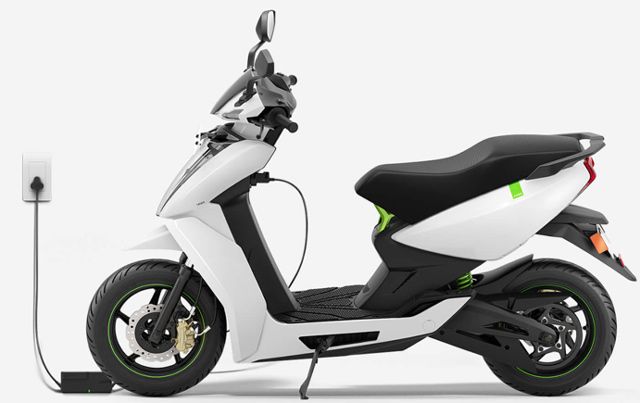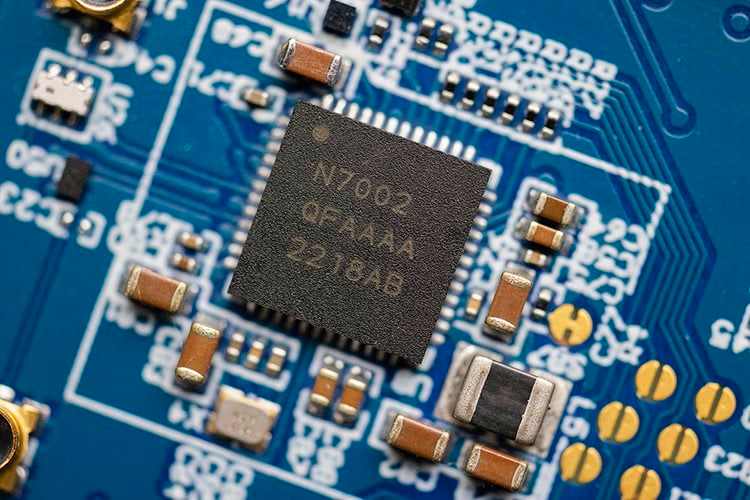Global Neuromarketing market size was USD 1.41 Million in 2023 and the market is projected to touch USD 2.89 Million by 2032, at a CAGR of 8.89 % during the forecast period. The growing field of neuromarketing is expanding due to advancements in neuroscience and technology, including improved brain imaging methods and more user-friendly neuro-monitoring instruments. These developments improve the accuracy and scalability of neuromarketing research, giving companies more insight into the preferences and emotional reactions of their target audience. Businesses need greater comprehension of consumer behavior than traditional market research because the industry is becoming more and more competitive. By identifying underlying motives and emotional cues, neuromarketing offers a distinct advantage that enables businesses to customize their approaches with a sophisticated grasp of what really appeals to their target market.
They could be a financial barrier for certain businesses due to the advanced technologies and specialist knowledge needed for successful neuromarketing research. High-level investments are required for the setup and upkeep of neuroimaging equipment, recruiting qualified personnel, and carrying out extensive research. Particularly smaller businesses might find it difficult to commit resources to these kinds of projects, which would restrict their access to the insightful information that neuromarketing has to offer. Dealing with these financial obstacles is essential as the discipline develops if we want to guarantee wider industry adoption and make neuromarketing insights more accessible to all. The increasing trend of using Brain-Computer Interface (BCI) technology to integrate Al into the field of neuromarketing offers a significant opportunity to change our understanding of consumer behavior. It is anticipated that this would greatly grow the neuromarketing industry. Also, when neuralink and neuromarketing are combined, there are a ton of options for digital interaction. This industry has undergone a major transformation thanks to Elon Musk’s creation of neuralink, or brain chip technology. By immediately gaining access to customers’ neurological reactions rather than depending on surveys and observations from the outside, this will significantly accelerate the rate of market expansion.
Countries Covered
U.S., Canada, Mexico, U.K., Germany, France, Italy, Spain, China, India, Japan, South Korea, Australia, Brazil, Argentina, GCC Countries, and South Africa, among others.
Click: https://organicmarketresearch.com/global-neuromarketing-market
Global Neuromarketing dynamics
The factors influencing the dynamics of the Global Neuromarketing market include regulatory mandates, technological advancements, and increasing industrial safety awareness. The word important development potential exists when big data analytics, artificial intelligence (AI), and neuromarketing are combined. The enormous volumes of neurological data produced by neuromarketing technologies may be processed and analyzed by AI algorithms, which can then be used to spot trends and offer more in-depth understanding of customer behavior. Businesses can improve their capacity to forecast customer preferences and optimize their marketing tactics, resulting in more focused campaigns and increased return on investment (ROI), by fusing neuromarketing data with big data analytics.
Global Neuromarketing drivers
Increasing Demand for Consumer Insights
To ensure to improve marketing strategies, businesses are placing more emphasis on comprehending customer behaviors and preferences. Neuromarketing offers useful insights into this process by examining how the brain reacts to marketing stimuli. Businesses utilize neuromarketing to gain a better insight of subconscious decision-making processes than they would with regular surveys or focus groups. Enhancing advertising, product designs, the branding tactics becomes easier as a result, increasing the need for neuromarketing services and technologies in a variety of sectors, including media, retail, and healthcare.
Advancements in Neuroscience and Technology
Neuromarketing is now more accessible and dependable thanks to the quick developments in neuroscience technologies like electroencephalography (EEG), functional magnetic resonance imaging (fMRI), and eye-tracking devices. With the aid of these technologies, marketers may track and evaluate emotional, cognitive, and brain activity in real time. The increasing affordability and sophistication of these tools, coupled with their ability to provide more accurate data, is driving organizations seeking to optimize their marketing efforts and increase return on investment to employ neuromarketing strategies.
- Restraints:
Ethical Concerns and Consumer Privacy
Neurological marketing, that focuses at brain activity and psychological responses, raises serious ethical concerns concerning consumer manipulation and privacy violations. Critics argue that corporations might utilize this technology to influence the subconscious choices of the vulnerable in order to exploit them, potentially leading to unethical marketing tactics. Consumers’ unwillingness to participate in studies that track their neurological reactions may potentially be a barrier to their desire to adopt these technologies. Neuromarketing may not be used as widely as it may be due to these ethical and privacy considerations.
High Costs of Neuromarketing Technologies
Neuromarketing uses expensive to acquire and upkeep modern technologies like as fMRI, EEG, and eye-tracking sensors. Employing these sophisticated methods for market research might be unaffordable, especially for smaller businesses. Operating costs are also increased by the need for qualified personnel to perform neuromarketing studies. The market’s growth may be constrained by these high financial barriers, since only larger companies with greater budgets can afford to include neuromarketing into their plans.
- Opportunities:
Increasing Acceptance in Various Sectors
Neuromarketing is not just being used in the retail and advertising industries; it is also becoming more and more popular in the product design, entertainment, and healthcare sectors. Neuromarketing, for instance, might be used to evaluate patient involvement with medical items or create health campaigns that are more successful. It can heighten the emotional effect of games or movies in terms of entertainment. A few potential available for neuromarketing vendors to expand their product offerings and boost their profits with the adoption of this cross-sector application.
- Segment Overview
By Technology, The Neuromarketing market is segmented into Functional Magnetic Resonance Imaging (FMRI), Electroencephalography (EEG), Eye tracking, Positron Emission Tomography (PET), and others. The neuromarketing market is dominated by the Electroencephalography (EEG) segment. It is the method that the major companies in the sector employ the most. Measuring brain activity at the cognitive processing speed can only be done with this technique. Additionally, the segment’s market is expanding as a result of the rising prevalence of neurological illnesses, the rising need for non-invasive diagnostic methods, and advancements in EEG technology. Other factors that are thought to affect the market size of this category include the aging population and the increasing recognition of the need of early identification of neurological conditions. In addition, the industry for EEG devices has a high degree of innovation, with participants consistently creating goods that increase effectiveness and safety. The second-largest category under consideration is functional magnetic resonance imaging (fMRI), which is expected to experience significant growth in the years to come. The reason for this market expansion is its capacity to provide detailed pictures of brain activity. This makes it possible to more effectively recognize consumer reactions and marketing reactions.
By End-Use, The Neuromarketing market is segmented into Banking, Financial Services, and Insurance (BFSI), Retail and consumer brands, Market Research, Scientific Institutions, Solvents, Others. Banking, Financial Services, and Insurance in By using neuromarketing to better understand customer emotions & decision-making processes, BFSI firms are able to provide greater client experiences and satisfaction. Neuromarketing offers deep insights into how consumers evaluate financial data, make decisions, and respond to marketing stimuli. retail and consumer brands Retailers can use neuromarketing to better understand how consumer behavior is affected by store layouts and designs, and then modify the retail environment to improve customer experiences. Businesses can evaluate the effectiveness of their advertising and promotional activities by using neuromarketing methodologies, which analyze customer brain responses as a starting point. Market Analysis A deeper comprehension of customer emotions, preferences, and subconscious responses is made possible by neuromarketing, which can greatly improve conventional market research techniques. Science-Based Organizations Science-based organizations foster innovation in neuroscience approaches and procedures, which is essential for the creation and implementation of neuromarketing strategies.
Global Neuromarketing Overview by Region
North America holds the largest market share in the neuromarketing industry. The US is expected to maintain its position as the leading regional market in the coming years, and it will play a significant role in the development of technology and neuromarketing trends. The market is also expected to undergo revolutionary opportunities as a result of the ongoing development and implementation of modern technologies, the presence of large organizations in the continent, and the use of color psychology by market players in their branding, such as McDonald’s and Coca-Cola.
The neuromarketing market in Asia Pacific is expanding at the quickest rate. The regional market is fueled by China that is the third most productive country globally in producing neuromarketing with 24% of all Scopus. The most explored themes in Chinese institutions are consumer association & branding strategy in relation to TV advertising, tourism, and color alliance. Aside from this, industry experts predict that the economy will be driven by consumption and that overall customer spending would increase by 2.5 times. There is a growing role for neuroscience in India. For businesses looking to grow in the nation’s market, accurately assessing consumer behavior and preferences becomes crucial.
Global Neuromarketing market competitive landscape
Leading companies such as Immersion Neuroscience, Merchant Mechanics Inc., NVISO SA, The Nielsen Company LLC (Nielsen Consumer Neuroscience), The Nielsen Company LLC (Nielsen Consumer Neuroscience) , Neural Sense (Pty) Ltd, Uniphore, Compumedics Limited, SR Labs SRL, Synetiq Ltd., and MindMetriks, Mindspeller. The market with the quickest rate of growth is neuromarketing in Asia Pacific. China leads the regional market, accounting for 24% of all Scopus publications and ranking third globally in terms of productivity in the neuromarketing publishing domain. The subjects that Chinese institutions have studied the most are consumer association & branding strategy in relation to TV advertising, tourism, and color alliance. In India, the field of neuroscience is growing. As a result, in order to succeed in the national market, it becomes crucial to accurately predict consumer behavior and preferences.
Contact Us:
Mob : +91 9319642100
Noida One Tower Sec 62 Noida 201301
Sales : sales@organicmarketresearch.com
Website : https://www.organicmarketresearch.com













